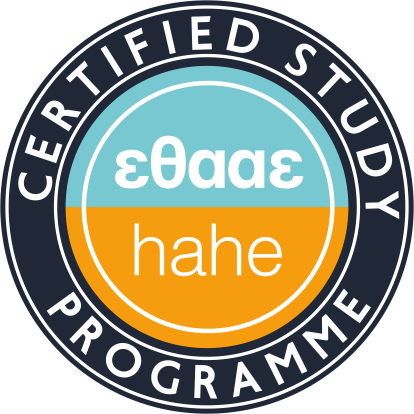Sociolinguistics
Teaching Staff: Tsigou Maria
Course Code: YE-0602
Gram-Web Code: ΚΟ0300
Course Category: Specific Background
Course Type: Compulsory Elective
Course Level: Undergraduate
Course Language: Greek
Semester: Any Winter
ECTS: 2
Total Hours: 2
Erasmus: Not Available
Issues of linguistic diversity and linguistic diversity are studied. In this context, extensive reference to the influence of context is made, i.e. communication circumstances in language, levels of use, their difference from style levels, translation problems that arise during the transfer of linguistic diversity to the target text, differences between languages etc. The aim of the course is to familiarize students with linguistic diversity and help them develop reflection regarding the difficulties of transferring it from one language to another.
Upon completion of the course, students will be able to:
- know basic principles of Sociolinguistics, basic phenomena and social parameters that affect language (gender, age, profession, etc.)
- recognize different levels of use and style levels of the source language in the texts to be translated
- translate linguistic diversity into the target language, when it is necessary and required by the purpose of the text
- know alternative ways of translating the linguistic variety of the source text when there is no corresponding in the target text
- develop an ideological attitude towards the transfer of linguistic diversity from the source text to the target text, but also towards linguistic diversity in general
Week 1
Context or situation environment and cognitive context. Relationship between text and context.
Week 2
Linguistic diversity: definition. Differences in written and oral speech and language strategies that characterize them.
Week 3
Linguistic variety depending on the use and depending on the user: distinction of levels of use and dialects.
Week 4
Geographical dialect, social dialect, temporal dialect, common dialect and idiom.
Week 5
Levels of use of the Greek language and other languages. Differences between the level of use and the level of style.
Week 6
MAK Halliday's theory of language functions and levels of use. Exercises.
Week 7
Social bilingualism. Bilingualism - multilingualism - monolingualism. Switching codes. Lingua franca, pidgin and Creole languages.
Week 8
Linguistic minority and minority language. Linguistic minorities around the world.
Week 9
Mortality of languages. Causes and symptoms of the disappearance of a language.
Week 10
Language policies in Europe and the world. Minor languages and how to approach them.
Week 11
Language contact and translation. Translation as a bridge of influences between languages.
Week 12
Translation exercises of different forms of language variety from Greek into English and from English into Greek.
Week 13
Summary of the taught theoretical approaches and translation exercises.
Αρχάκης, Α. & Κονδύλη, Μ. (2011). Εισαγωγή σε ζητήματα κοινωνιογλωσσολογίας. Αθήνα: νήσος.
Γούτσος Δ. & Γεωργακοπούλου Α. (2011) Κείμενο και Επικοινωνία. Αθήνα: Πατάκης.
Δελβερούδη, Ρ. (2001). Γλωσσική ποικιλία. Εγκυκλοπαιδικός οδηγός. Πύλη για την ελληνική γλώσσα.
Κοντοσόπουλος, N. (1998). Γλώσσες και διάλεκτοι της Ευρώπης. Α’. Αθήνα: Εκδόσεις Γρηγόρη.
-------- (1981/2001). Διάλεκτοι και ιδιώματα της νέας ελληνικής. Αθήνα.
Τσίγκου, Μ. (2015). La variété linguistique dans la traduction d’Astérix en grec. K. Wrόblewska-Pawlak – J. Sujecka-Zając & E. Pachocińska (eds). Regards sur l’oral et l’écrit. Warszava : Wydawnictwa Uniwersytetu Warszawskiego. 127-135.
Φλιάτουρας, Α. & Αναστασιάδη-Συμεωνίδη, Α. (2004). Η διάκριση [λόγιο] και [λαϊκό] στην ελληνική γλώσσα. Ορισμός και ταξινόμηση. Πρακτικά 6ου Διεθνούς Συνεδρίου Ελληνικής Γλωσσολογίας (Ρέθυμνο, 18-21 Σεπτεμβρίου 2003). Ρέθυμνο: Πανεπιστήμιο Κρήτης. 1-16.
Halliday, M.Α.Κ. (1970). Language structure and language function. In J. Lyons (ed.) New horizons in Linguistics. Harmondsworth: Penguin.
-------- (1974a). Language and Social Man. London: Longman.
-------- (1974b). La base fonctionnelle du langage. Langages. 34/8. 54-73. (URL: http://www.persee.fr)
-------- (1976). Anti-Languages. American Anthropologist. 78 (3). New Jersey: Wiley. 570-584.
-------- (1978). Language as Social Semiotic. London: Edward Arnold.
-------- (1985). An Introduction to Functional Grammar. London: Edward Arnold.
-------- (2002). Linguistic Studies of Text and Discourse. London & New York: Continuum.
Hatim, B. & Mason, I. (1990). Discourse and the Translator. London: Longman.
------- (2005). The Translator as Communicator. London & New York: Routledge.
Face-to-face teaching. This two-hour course is conducted in the form of a lecture using a dialectical method and with the help of a Power Point presentation as well as web material.
Use of ICT in teaching.
Students are evaluated throughout the semester. The basic criterion is their participation in the teaching process and their response to the elaboration of the assigned exercises. The final evaluation is with written examination.
Back
Undergraduate
Secretariat
Galinos Building (1st floor)
Corfu, GR-49132
Open to the public:
Mon, Wed, Fri: 11am - 1pm
Tue, Thu: 11am - 1pm (Erasmus+)
 E-Class Platform
E-Class Platform
 eSecretariat
eSecretariat
 Webmail
Webmail
 Learning Material Management
Learning Material Management
 Internship Portal
Internship Portal
 Library
Library





 Sociolinguistics
Sociolinguistics
